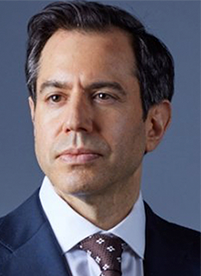Article
Adjuvant nivolumab benefit in urothelial carcinoma sustained with longer follow-up
Author(s):
Adjuvant nivolumab (Opdivo) continued to demonstrate a clinically meaningful disease-free survival (DFS) benefit in patients with high-risk, muscle-invasive urothelial carcinoma, according to extended follow-up from the phase 3 CheckMate 274 trial.1
Data shared during the 2022 AUA Annual meeting showed that with an additional 5 months of follow-up, patients in the intention-to-treat (ITT) population who received nivolumab (n = 353) experienced a median DFS of 22.0 months (95% CI, 17.7-36.9) compared with 10.9 months (95% CI, 8.3-14.0) among the 356 patients who received placebo (HR, 0.70; 95% CI, 0.57-0.85). The 12-month DFS rates were 63.5% vs 46.9%, respectively.1
The DFS benefit was even more pronounced in patients with PD-L1 expression of at least 1%; the median DFS was not reached (NR; 95% CI, 22.1-not estimable [NE]) in the nivolumab cohort (n = 140) vs 8.4 months (95% CI, 5.6-20.0) in the placebo cohort (n = 142; HR, 0.53; 95% CI, 0.38-0.75).1 The 12-month DFS rates were 67.6% vs 46.3%, respectively.
In terms of non–urothelial tract recurrence-free survival (NUTRFS), the median was 26.0 months (95% CI, 19.5-41.1) in the nivolumab arm compared vs 13.7 months (95% CI, 8.4-20.0), in the placebo arm (HR 0.71; 95% CI, 0.58-0.88), with 46.7% vs 55.9% of patients experiencing events, respectively. Among patients with a PD-L1 expression of at least 1%, the median NUTRFS was NR (95% CI, 25.8-NE) vs 10.8 months (95% CI, 5.7-20.7), respectively (HR, 0.54; 95% CI, 0.39-0.77).
Investigators also observed a benefit indistant metastasis-free survival (DMFS) among patients who received nivolumab compared with placebo; the median DMFS was 41.1 months (95% CI, 26.0-NE) vs 29.2 months (95% CI, 15.2-NE), respectively (HR, 0.73; 95% CI, 0.58-0.92). Patients with PD-L1 at or over 1% had a median DMFS of NR (95% CI, 26.0-NE) when treated with nivolumab compared with 20.7 months (95% CI, 10.8-NE) when treated with placebo (HR, 0.60; 95% CI, 0.41-0.88).1
DFS benefits were also seen with nivolumab treatment across most of the subgroups analyzed, including age, sex, ECOG performance status, nodal status, and use of prior cisplatin-based chemotherapy.
Matthew Galsky, MD

“These results support adjuvant nivolumab as a standard of care for high-risk [patient with] muscle-invasive urothelial carcinoma after radical surgery,” Matthew Galsky, MD, and colleagues wrote. Galsky is a professor medicine (hematology and medical Oncology), director of genitourinary medical oncology at the Icahn School of Medicine at Mount Sinai, in New York, New York. He also serves at the codirector of the Center of Excellence for Bladder Cancer and associate director for translational research at The Tisch Cancer Institute.
Adjuvant nivolumab monotherapy was previously approved on August 19, 2021, for patients with urothelial carcinoma who are at high risk of recurrence after undergoing radical resection based on findings from CheckMate 274.2
The double-blind CheckMate 274 trial randomly assigned patients 1:1 to receive either nivolumab 240 mg twice weekly or placebo for a total adjuvant treatment time of 1 year or until disease recurrence or discontinuation. Eligible patients underwent radical surgery within 120 days before randomization with or without neoadjuvant cisplatin therapy. Patients were stratified by PD-L1 status, pathological nodal status, and prior chemotherapy use.3
The coprimary end points of the study were DFS in the entire population and among patients with PD-L1 expression of 1% or greater. Secondary end points included NUTRFS, overall survival, and disease-specific survival. DMFS was also included as an exploratory end point.3
The baseline patient characteristics in the trial were well balanced between the 2 arms. The mean age was 65.3 years (range, 30-92) and 65.9 years (range, 42-88) in the nivolumab and placebo arms, respectively. Most patients in both cohorts were males (75.1% vs 77.2%), white (74.8% vs 76.4%), and had an ECOG performance status of 0 (63.5% vs 62.1%).3
Regarding safety, 351 patients in the experimental arm and 348 in the placebo arm were evaluable. Adverse effects (AEs) of any cause and any grade occurred in 98.9% and 95.4% of patients, respectively. Common AEs of any grade in the nivolumab arm included pruritus (23.1%), fatigue (17.4%), and diarrhea (16.8%). In the placebo arm, the most common AEs of any grade were fatigue (12.1%), pruritus (11.5%), and diarrhea (10.9%).3
Two patients in the nivolumab group died, with both deaths attributed to pneumonitis. Treatment-related AEs of any grade led to discontinuation in 12.8% of patients in the nivolumab arm compared with 2.0% of patients in the placebo arm. The most common treatment-related AEs in the investigative arm were pneumonitis (1.7%), rash (1.1%), and colitis (0.9%).3
References
1. Galsky M, Witjes JA, Gschwend JE, et al. Disease-free survival with longer follow-up from the CheckMate 274 trial of adjuvant nivolumab in patients after surgery for high-risk muscle-invasive urothelial carcinoma. J Urol. 2022;207(suppl 5):e183. doi:10.1097/JU.0000000000002536.01
2. FDA approves nivolumab for adjuvant treatment of urothelial carcinoma. News release. FDA. Updated February 2, 2022. Accessed May 13, 2022. bit.ly/39nf4Fq
3. Bajorin DF, Witjies JA, Gschwend JE, et al. Adjuvant nivolumab versus placebo in muscle-invasive urothelial carcinoma. N Engl J Med. 2021;384(22):2102-2114. doi:10.1056/NEJMoa2034442
Newsletter
Stay current with the latest urology news and practice-changing insights — sign up now for the essential updates every urologist needs.

















